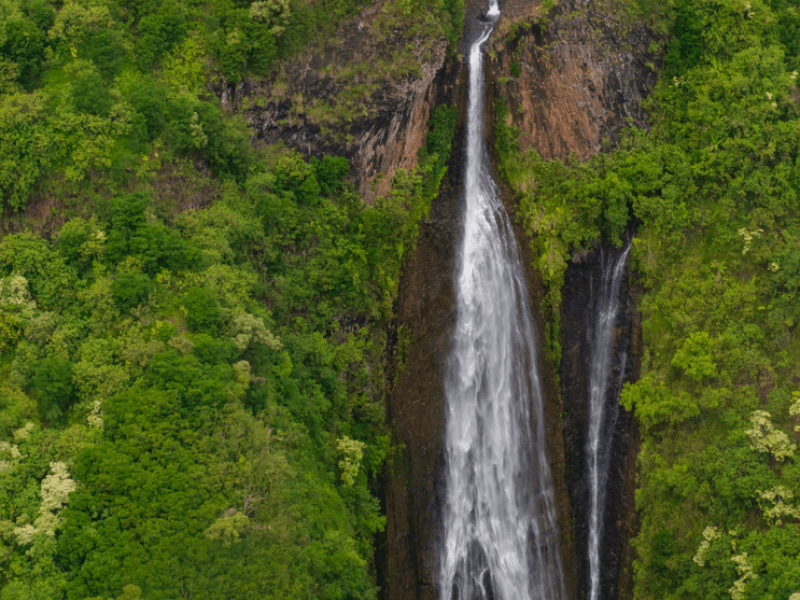What Is World Water Day and How Can We All Champion the Cause?
The first World Water Day took place on March 22, 1993. Nearly three decades later, it’s as important as ever to celebrate water and draw attention and action to the billions of people who lack access to this vital resource.

As we approach the 30th year of celebration, it remains critical to draw attention and action to water conservation, as this vital resource remains at the core of sustainable development and the survival of people and ecosystems across the globe. That’s why World Water Day—and our core operations at 1 Hotels—place focus on inspiring action towards clean water and sanitation for all by 2030.
The reality is:
- 2 billion people do not have access to safely managed drinking water.
- Over 40% of people across the world face water scarcity.
- Over 80% of human-generated wastewater runs into rivers and seas without any sanitation whatsoever.
- Nearly 1,000 children die every day from preventable water and sanitation-related illness.
- 70% of all deaths from natural disasters are a result of floods and other water-related disasters.
But we won’t mention all the work to be done without also mentioning the inspiring progress. Between 1990 and 2015, the percentage of people using an improved water source increased from 76% to 90%.
Let’s continue the fight to ensure access to clean water and sanitation for all by the end of the decade.
World Water Day 2022: Groundwater
The theme for World Water Day 2022 is “Groundwater—making the invisible visible.”
This theme is centered around the idea that groundwater is an invisible resource with visible impacts at every turn. Groundwater is an out-of-sight treasure that’s vital to the planet and our lives. In dry parts of the world, it may even be the only water people can access.
Groundwater (found in aquifers underground) is the source of liquid freshwater that supports water supplies, ecosystems, farming, sanitation systems, and industry operations. It’s an increasingly critical asset in the fight against climate change and our ability to adapt to its impacts.
Because it’s an underground resource, we’re not exactly sure how much groundwater still exists, meaning we could be rapidly depleting it or even failing to harness its potential as a water resource. Unfortunately, unsustainable human actions also deplete and pollute groundwater, so it’s critical that we work together to better understand, protect, and manage it—especially as climate change evolves and worldwide populations increase.
It must be considered an essential part of sustainable development policymaking.
Water Stewardship at 1
After talking about how important it is to responsibly manage and protect water resources around the world, you might be wondering what we’re doing to walk the walk.
With sanctuaries in locations that range from flood-risk to drought-prone, we’ve seen firsthand the vitality of water stewardship. We’re fully committed to responsible use, as well as helping our communities establish residency to water resource oscillations.
Property-Wide
Across all existing and opening properties, we maintain the following requirements regarding water stewardship.
- Landscaping: We ensure indigenous landscaping that adapts to the land.
- Irrigation: We use efficient irrigation systems that utilize greywater or rainwater.
- Fixtures: All bathrooms and guestrooms are equipped with low-flow fixtures.
- Filters: We provide water-efficient filtration systems in-room or at the base building level.
- Fillup: We ensure filtered water fill-up stations are easily accessible for all guests (in-room or on-floor).
- Monitoring: We use building-level water monitoring at all properties and local monitoring wherever possible.
- Standards: We maintain cooling tower management standards and LEED, ENERGY STAR®, and WELL building certifications.
We firmly believe that no effort is too small to count, so we’d also like to highlight some of the ways our food and beverage outlets save water on a daily basis. First, we partner with purveyors who rely on sustainable and regenerative agriculture practices that maintain healthy water standards—from ethical fisheries and oyster-replenishment programs to free-range organic meats and imperfect produce.
Our sustainable cocktail program is another reason to toast. According to the Beverage Industry Environmental Roundtable (BIER), producing one liter of the average spirit requires 37 liters of water. To reduce this, we source our spirits from sustainable companies such as Botanist Gin, Hanson’s Organic Vodka, and Hacienda Patrón.
As an example, Hacienda Patrón uses a cutting-edge water treatment and reclamation system that reuses water from their tequila production to power their cooling towers and cleaning operations. Everyday efforts like this add up in a big way.
Property-Specific
On top of these property-wide initiatives, we’d like to highlight some unique water-saving initiatives at 1 Hotel West Hollywood.
- Intelliflo Variable Speed and Flow Pool Pump: This efficient water feature installation automatically adjusts to changes in flow conditions, resulting in energy savings of up to 90%.
- AFM Filtration: This replacement for our pool filtration system should result in an annual water savings of 80%, equivalent to 21,840 gallons of water per year.
Over on the east coast at 1 Brooklyn Bridge, our sanctuary acts as a natural extension of the Brooklyn Bridge Park. We rely on a rainwater collection tank that supports the park’s irrigation systems and the property’s indigenous landscapes.
Partnerships, Policy, and Public Engagement
We continue to champion the causes of our partners through community events, continuing education, and direct contributions. Below are a few ways our partners contribute to water stewardship worldwide.
- The NRDC helped win passage of the Clean Water Act in the early 1970s and continues to fight for clean, sanitary, and sufficient water for all through policy, on-site evaluations, education, and more.
- The Nature Conservancy is taking direct action to protect and conserve 30 million hectares of freshwater, 4 billion hectares of oceans, and 650 million hectares of land over the next 10 years.
- Oceanic Global highlights humanity’s relationship with the oceans and provides clear solutions to protect these waters long term.
- Intersectional Environmentalist sheds light on the barriers that marginalized communities face—such as access to clean water—and works to dismantle systems of oppression through community and global calls to action.
We’re also committed to speaking out about public policy and continuing to educate our team members and communities through resources such as The Field Guide, expert panels, beach cleanups, and other conservation-centered events.
How Can You Help?
There are so many ways to champion water stewardship on the individual level.
You can start by learning more about groundwater on the World Water Day website. You can also explore some of the ways water intricately flows through every aspect of the environmental movement in the following articles on The Field Guide.
- Clean Air & Water Access for All
- How Warmer Weather Worsens Flash Floods
- We’re Responsible for Warming the Earth, and It’s Time to Put Things in Reverse
- Honoring the Blue Planet on World Oceans Day 2021
- What Causes Wildfires, and What Can You Do to Help Right Now?
We encourage you to share these stories and your learnings with your community through social media, events, and casual conversations. In terms of direct action, the above articles contain specific advice and calls to action to promote responsible water management. But below are a few action items to start.
- Conserve water in your home using faucet aerators, low-flow showerheads, water-efficient appliances, and more.
- Start conversations in your community through your homeowners’ association, your company, or your local meetups.
- Get comfortable reaching out to your representatives to ask them what they’re doing to promote SDG 6 in your community and beyond.
In addition to this, be sure to use your dollars to vote for companies that consciously and outwardly fight for water stewardship and clean water worldwide—and have third-party certifications and physical evidence to prove it.
As one of those companies, we promise to continue to remain ambitious and transparent on our journey to fight for clean water and sanitation for all.













